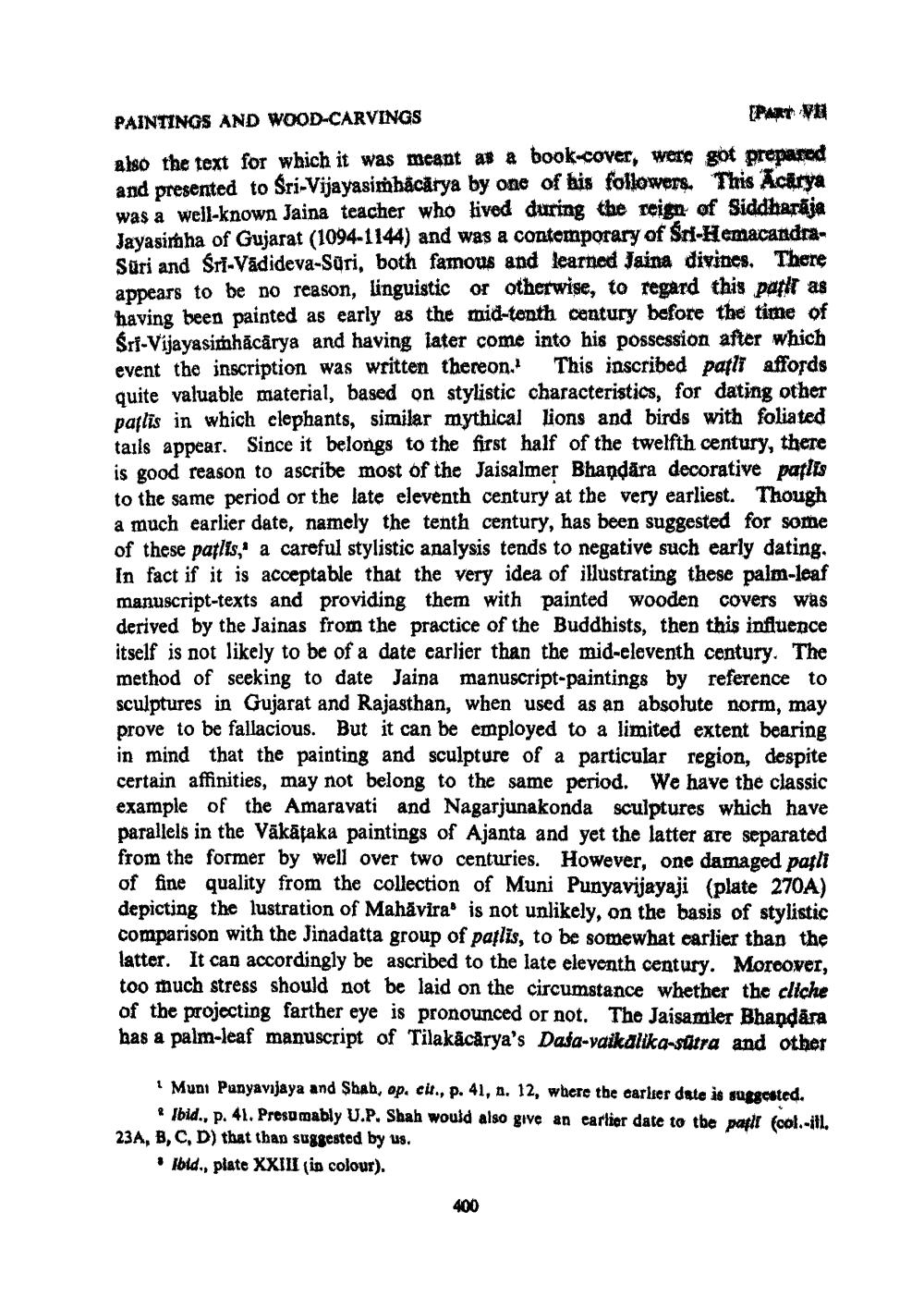________________
PAINTINGS AND WOOD-CARVINGS also the text for which it was meant as a book-cover, were got prepared and presented to Sri-Vijayasinhācārya by one of his followers. This Acirva was a well-known Jaina teacher who lived during the reign of Siddharaia Jayasirha of Gujarat (1094-1144) and was a contemporary of Sri-HemacandraSüri and Sri-Vādideva-Suri, both famous and learned Jaina divines. There appears to be no reason, linguistic or otherwise, to regard this papir as having been painted as early as the mid-tenth century before the time of Sri-Vijayasimhācārya and having later come into his possession after which event the inscription was written thereon. This inscribed patit affords quite valuable material, based on stylistic characteristics, for dating other patlis in which clephants, similar mythical lions and birds with foliated tails appear. Since it belongs to the first half of the twelfth century, there is good reason to ascribe most of the Jaisalmer Bhandara decorative patlis to the same period or the late eleventh century at the very earliest. Though a much earlier date, namely the tenth century, has been suggested for some of these patlis, a careful stylistic analysis tends to negative such early dating. In fact if it is acceptable that the very idea of illustrating these palm-leaf manuscript-texts and providing them with painted wooden covers was derived by the Jainas from the practice of the Buddhists, then this influence itself is not likely to be of a date earlier than the mid-eleventh century. The method of seeking to date Jaina manuscript-paintings by reference to sculptures in Gujarat and Rajasthan, when used as an absolute norm, may prove to be fallacious. But it can be employed to a limited extent bearing in mind that the painting and sculpture of a particular region, despite certain affinities, may not belong to the same period. We have the classic example of the Amaravati and Nagarjunakonda sculptures which have parallels in the Vākātaka paintings of Ajanta and yet the latter are separated from the former by well over two centuries. However, one damaged pafli of fine quality from the collection of Muni Punyavijayaji (plate 270A) depicting the lustration of Mahavira is not unlikely, on the basis of stylistic comparison with the Jinadatta group of patlis, to be somewhat earlier than the latter. It can accordingly be ascribed to the late eleventh century. Morcover, too much stress should not be laid on the circumstance whether the cliche of the projecting farther eye is pronounced or not. The Jaisamler Bhandara has a palm-leaf manuscript of Tilakácărya's Dasa-vaikalika-sutra and other
1 Muni Panyavijaya and Shab, op. cit., p. 41, n. 12, where the carlier date is suggested.
Ibid., p. 41. Presumably U.P. Shah would also give an earlier date to the patit col.-itl. 23A, B, C, D) that than suggested by us.
• Ibid., plate XXIII (in colour).
400




